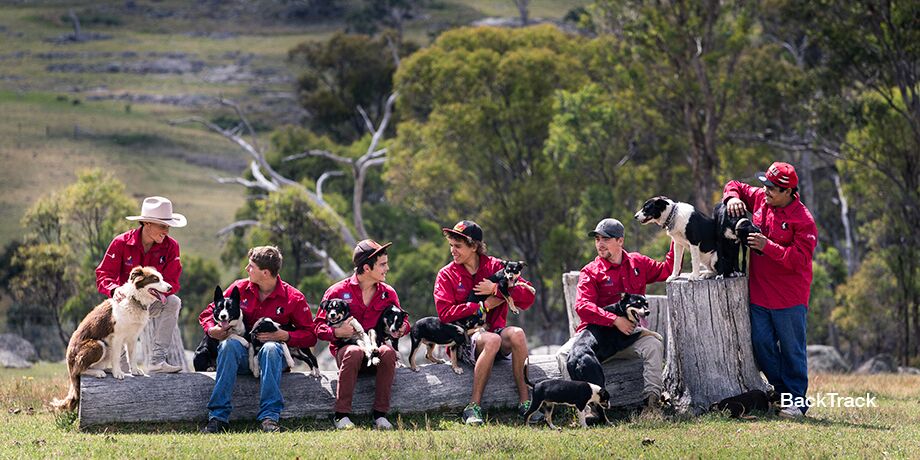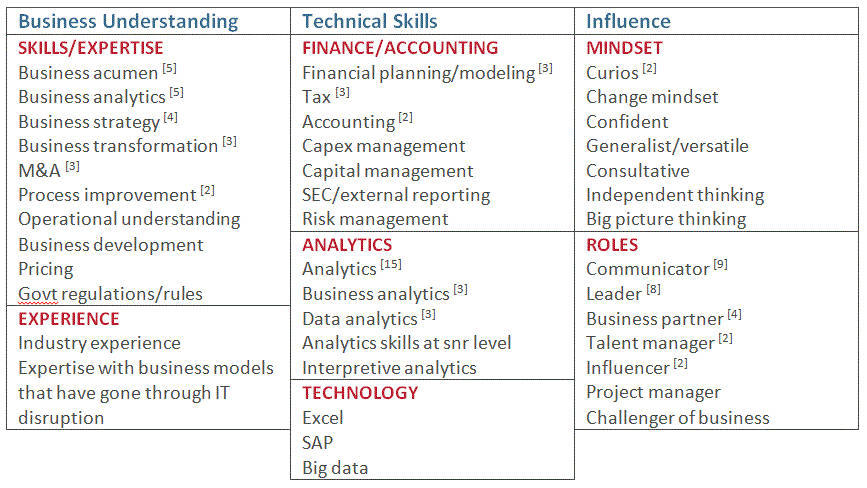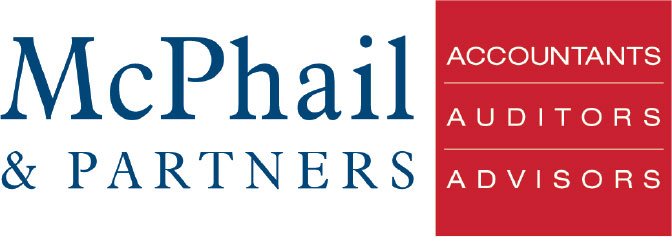The Kimberley Foundation
The Kimberley Foundation is a Private Charitable Trust which funds many programs and projects of Australian and some international not for profit organisations. They support organisations that are working towards long-term solutions to problems experienced by disadvantaged children and youth in our society in the areas of health, education and the arts.
McPhail & Partners are proud to be associated with this foundation and we would like to share a recent news update that Mitty Williams [Foundation Manager] wrote about the terrific work the foundation and others have recently achieved. The foundation works with a variety of programs and we thought you might be interested in some of the work that is being achieved across Australia.
Always another chance to get back on track!

BackTrack is a wonderful program up in Armidale in northern New South Wales helping young people like those you see in this picture ‘put a head on their shoulders’.
The team, led by Bernie Shakeshaft, has been turning lives around. You can see in the young men, who jump right in when given a chance to learn and do some meaningful work, and you can see it in the statistics; juvenile crime in Armidale has dropped by 77%, a drop ‘unheard of’ anywhere else in NSW.
You can also see it in the community. There’s trust there, which has developed as the young people in the program learn and work and show they can be relied on. Paws Up, a terrific program that trains up a prize-wining dog high-jump team, has clearly helped the young people to re-learn trust too, along with self-discipline, confidence and communication skills.
This visit has been a highlight. It’s heart-warming to see the young people in the program thrive and I’m deeply impressed by the persistent hard work from Bernie and his team. Right now, Bernie is on a Churchill Scholarship researching how organisations like BackTrack have become financially sustainable.
To learn more about this private foundation and the organisations that they help, click here.
Rental Property Repairs & Improvements

When will an expense be a repair or maintenance and when will an expense be an improvement? This question is extremely important a s the tax treatment is vastly different depending on the outcome of this question. When we say 'repairs', we mean work to make good or remedy defects in, damage to or deterioration of the property. For example:
- Replacing part of the guttering or windows damaged in a storm
- Replacing part of a fence damaged by a falling tree branch
- Repairing electrical appliances or machinery.
When we say 'maintenance', we mean work to prevent deterioration or fix existing deterioration. For example:
- Painting a rental property
- Oiling, brushing or cleaning something that is otherwise in good working condition
- Maintaining plumbing.
When we say 'improvement' we mean work that:
- Provides something new
- Generally furthers the income-producing ability or expected life of the property
- Generally changes the character of the item you have improved
- Goes beyond just restoring the efficient functioning of the property.
Some examples of improvements are:
- Adding an additional room
- Replacing all existing plumbing
- Replacing all existing electrical wiring
- Renovating the entire kitchen
- Replacing an entire roof.
If an expense is repairs or maintenance a deduction can be claimed for the entire expense in the year it is incurred. If an expense is an improvement it will be treated as a capital expense and should be depreciated over its expected life. Generally any improvements that forms part of the house and cannot be detached such as a new roof, bathroom renovation or house extensions, can only be depreciated at 2.5% over 40 years. Replacement of assets that are detachable from the house such as ovens, hot water systems, carpets and curtains can be depreciated at much higher rates depending on the asset.
Below are some common questions relating to repairs and the timing of deductions.
Can you claim the cost of repairs you make before you rent out the property?
You cannot claim the cost of repairing defects, damage or deterioration that existed when you obtained the property, even if you carried out these repairs to make the property suitable for renting. This is because these expenses relate to the period before the property became an income-producing property.
Can you claim the cost of completely replacing something?
If you have to replace something identifiable as a separate item of capital equipment (such as a complete fence or building, a stove, kitchen cupboards or a refrigerator) you have not carried out a repair. This means you cannot claim the entire replacement cost you incurred in the year you incurred it. However, you may be able to claim the cost as a capital works deduction or a deduction for decline in value.
Can you claim repairs you carry out at the same time as improvements?
If you conduct a project that includes both repairs and improvements to your property, you can only claim a deduction for the cost of your repairs if you can separate the cost of the repairs from the cost of the improvements. If you hire a builder or other professional to carry out these works for you, we recommend you ask for an itemised invoice to help work out your claim.
Determining whether an expense relating to your rental property is repairs and maintenance or an improvement can be a minefield and consulting us when you are considering substantial work on your rental property will ensure the correct and most tax advantageous treatment is obtained.
For more information on how to maximise your rental property deductions please contact Carol from our office by calling 9898 9221.
The $20,000 Write Off – What You Need to Know
 As a small business owner, you’ve probably heard about the 2015 Budget changes to instant asset write-offs. To help you understand what the changes can mean for your small business, we’ve put together some key facts.
As a small business owner, you’ve probably heard about the 2015 Budget changes to instant asset write-offs. To help you understand what the changes can mean for your small business, we’ve put together some key facts.
What has changed as a result of the 2015 Budget?
Under the changes to simplified depreciation rules for small business, you can:
1. Immediately write off eligible depreciating assets costing less than $20,000 each, as long as you buy them and install them ready for use from 7.30pm on 12 May 2015 until 30 June 2017.
2. Immediately write off a small business asset pool (including existing pools) if the balance is less than $20,000 at the end of a financial year, until 30 June 2017.
3. Choose to use simplified depreciation rules even if you opted out in the last five years. This took effect at 7.30pm on 12 May 2015 and will end on 30 June 2017.
Find out more about the changes to accelerated depreciation for small businesses.
If you’re a primary producer, you can:
1. Immediately deduct the cost of fencing and water facilities (such as dams, tanks, bores, pumps, etc.)
2. Depreciate over three years the cost of fodder storage assets (such as silos and tanks that you use to store grain and other animal feed).
These changes apply to eligible assets that you buy from 7.30pm on 12 May 2015. Find out more about the changes to accelerated depreciation for primary producers.
When do these changes take effect?
These changes are in effect now. The new laws were passed on 22 June 2015.
How is it different to before?
Before the changes, under simplified depreciation rules:
1. You could only immediately write off eligible depreciating assets that cost less than $1,000 each
2. You could only immediately write off a small business asset pool if the balance was less than $1,000 at the end of a financial year
3. If you opted out of the simplified depreciation rules, you had to wait five years before you could use them again.
Before the changes, primary producers could claim the costs of:
1. Fences over a period of up to 30 years
2. Water facilities over 3 years
3. Fodder storage assets over a period of up to 50 years.
Will these changes apply to all businesses?
No. The simplified depreciation rules only apply to businesses with a turnover of less than $2 million.
Sole traders and partnerships - if total tax deductions for your business is greater than the income from your business (that is, your business makes a loss), you may be eligible to offset the loss against your other income (such as salary and wages). There are some conditions you’ll need to meet to be eligible – read non-commercial losses on the ATO website for more information.
Do I get my money back straight away?
No. ‘Immediate’, ‘instant’, or ‘straight away’ means that you can claim the cost of depreciating assets in the financial year that you first used or installed them ready for use. By claiming the deductions, you reduce your taxable income, and your tax payable.
You don’t get cash back from the tax office straight away.
What can I write off?
You can only write off eligible depreciating assets that cost less than $20,000 and that you use for business purposes.
Depreciating assets include items such as computers, electrical tools, furniture, curtains, carpets and cars.
Land and trading stock are not depreciating assets.
Note that certain types of depreciating assets can’t be written off under simplified depreciation rules, including horticultural plants, capital works, and software.
Read the full list of exclusions to the simplified depreciation rules.
Do I need to keep any records?
You need to keep records of depreciating assets if you claim deductions for them. These records need to be kept for at least 5 years.
How can I find out more about these changes?
Visit the ATO website for more on expanding accelerated depreciation for small business or call the ATO on 13 28 66.
For more information about how to make your business more tax effective please contact Carol at our office on 9898 9221.
The Best Skill Set for Bolstering Your Finance Team
 If you could bolster your finance team with one particular skill set or expertise, which would it be? Deloitte reports on what the top finance executives are thinking and doing. Below is an extract from their findings.
If you could bolster your finance team with one particular skill set or expertise, which would it be? Deloitte reports on what the top finance executives are thinking and doing. Below is an extract from their findings.
Very strong demand for people who can effectively use data to influence business decisions:
• Strong demand for analytics expertise: about one-quarter of CFO’s say they would like to bolster their team with expertise around the gathering, analysis, and presentation aspects of analytics.
• Business acumen over technical finance skills: While some CFO’s mention a desire to add technical skills to their finance team [especially around FP&A and tax], many more voice a need for stronger business understanding and acumen.
• Leadership and influence highly valued: CFO’s voice a strong demand for people who can not only analyze and synthesize data, but also for those who can persuasively communicate insights and ideas to people throughout the business. Central to their comments, traits they believe go along with influential staff – curiosity, confidence, consultative skills, and big-picture thinking.
If you could bolster your finance team with one particular skill set or expertise, which would it be?

* This chart presents a summary of CFO's free-form responses. CFO comments have been consolidated and paraphrased.
Extract taken from Deloitte
An Interview with Wayne Durdin – Celebrating 35 Years
This year celebrates 35 years for Wayne being part of McPhail and Partners, such a fabulous milestone. In this interview, Wayne shares his insights into the industry, the changes over the years both personally and professionally and what his aspirations were if he wasn’t an Accountant. Thank you Wayne for sharing your story and we wish you many happy returns.
1. What year did you start at McPhail and Partners?
June 1980, as a very young, single (engaged) keen audit/tax grad.
2. Why did you join the business?
I had recently graduated after 7 years of full time employment & part time study at Swinburne. I was with a city firm of 6 partners & 50 staff, doing both audit & tax work & they were in the process of merging with what was to eventually become part of Deloitte. I liked the smaller, personal relationships with both the staff & the clients & did not want to be part of a then big6 firm where I could envisage myself doing predominately audit work for large public companies. I was looking around to see what my options were & what was available when I met with Ross & Brian who were looking for someone with audit experience to join their family business. We obviously clicked & the rest is history.
3. Why have you stayed?
In short because of the people; both the staff & the clients. I enjoy the close personal relationships I have developed with our clients. Seeing them achieve their personal goals & knowing you were a part of it is a great thrill. You feel very privileged knowing & sharing many of their confidences & aspirations & you develop many friendships. This can happen in many accounting practices, but at McPhail & Partners it is also working with a great group of people who share similar values.
4. So much has changed in the world over the last 35 years, what are five of the biggest changes you have witnessed in the accounting world?
I could easily say GST, superannuation, computers, the Internet & communication. However, these are individual changes, & although specific to tax &accounting they are the cause & do not reflect the real underlying changes. Not in any particular order:
- The increasing rate at which things change. Computers, phones, & software are all changing at increasing speeds. It would be nice to enjoy new advancements, fully utilise and appreciate them without the worry that it will become obsolete with the latest update!
- The expectation of immediate response. I blame this on emails & mobile phones, but there is a community expectation of wanting things immediately. Once an email has been sent it is assumed that a) you have received it, b) you have read it or seen it & c) you have acted upon it. People in general live for the moment & do not plan ahead. Everything is wanted now.
- The complexity within all things, not just taxation. Oh for the days when things were simple & you could give straight forward answer or advice that your clients wanted. Now it is all given with disclaimers, the fear of being wrong, or having to ask yourself, am I authorised to say this. We generally know the answer, what is best for our client & what they should do, but in most cases we can’t simply tell them.
- The availability of knowledge. The Internet, Google, or whatever provides information to everyone at their fingertips. Unfortunately this is easily misinterpreted, misunderstood & cannot always be relied upon.
- Specialization. No longer is it possible to know everything. Knowing your limitations & when to refer to a specialist, whether it is another accountant, financial planner, legal or superannuation expert is a critical part of providing the best service to your clients.
5. How has business changed over the last 35 years?
The above changes also apply to the business world in general. I would however add that business is now international. With the Internet, on line shopping, outsourcing overseas, have all added new dimensions to the business world. Not only is this is a different form of competition which requires new business skills, but it also provides opportunities to many entrepreneurs.
6. How do you think you have changed over that time?
Hopefully for the better! I realise that I cannot do everything & I now rely a lot more on others. Older & wiser, or should I say more experienced, I now understand the value of client relationships & the service that we provide. It is not just a tax return or BAS, but it is a service that gives our clients piece of mind & security. As a family man, I have seen & experienced many of the challenges that our clients encounter & can confidently advise them from first hand experience. The one thing that I learnt very early on is that everyone is different, has different goals & ambitions. Very obvious, but easily overlooked when working with financial matters.
7. Ten years from now, how do you believe the world of accounting will look?
Obviously it will be very different. Over the years I have seen accounting change from hand written cash books & ledgers, the use of 13 & 18 column sheets (the precursor to excel spreadsheets), the massive time savings with the introduction of the Kalamazoo system, Burroughs accounting machines, computers & now laptops, mobile phones & tablets.
Technology will be constantly changing, that is a given, & the now accepted use of the cloud.
The accounting profession is moving to real time information & reporting. With the use of technology such as direct bank feeds, I believe this will provide immediate financials, & enable the automated preparation of tax returns, BAS etc. making data entry obsolete, along with the need for the separate preparation of returns.
As an accountant we will be providing clients with meaningful advice on planning, business improvement, mentoring, & more certification/audit type reports. Clients will always need assistance with business management skills.
8. What is one piece of advice you would give to a university graduate who is looking for work?
They need to be themselves. With minimal experience it is essential that they are the right personality fit for the business.
9. Is there a funny tale you can share about McPhail and Partners that perhaps others don’t know?
Accountants are traditionally dull & conservative, but we do have our moments, generally not in public. There have been some great practical jokes played on staff within the office, & I have been on the receiving end of a few over the years. I have returned from holidays to find my office had been fully relocated into the tea room, an area too small for either a desk or a chair. Or one of my favorites was when we learnt that we could log in to other computers remotely. One particular staff member was continually found to be playing solitaire & other computer games when others walked into his office, until he realised that he was being set up. There are other stories, but these are best kept private as most would also incriminate me in some way.
10. If you were to start over again and had the opportunity to work in a different industry and role, what would you choose?
I have always enjoyed problem solving which gave me an interest in law when younger, but I have always had an interest in music. Not as a musician, I can’t sing, dance & minimal playing ability, but possibly in some capacity within the music recording industry if it had been possible. I also loved all types of sport, (& still do) & was at best OK with some of them, so I knew very early that it was only going to be a hobby & not a career.
5 Steps to Business Process Improvement

Whenever we're asked by clients to explain our approach to Business Process Improvement or Re-Engineering, we invariably begin by telling the parable of the "Nine Blind Men and the Elephant." Here it is:
Nine blind men surround an elephant. Each is grabbing the elephant in a different place. Someone asks each of the blind men in turn "What's an elephant like?" The blind man holding the elephant's tail says, "An elephant is like a rope." The man holding one of the elephant's ears replies, "An elephant is flat, like a pancake." Yet a third blind man, with his arms wrapped around one of the elephant's legs, responds, "An elephant is shaped like the trunk of a tree."
And so on.
The point of the parable is simply this: Each of these men is right -- for his part of the elephant. Yet, in the more important, holistic sense of accurately describing what an elephant is really
like, every one of them is ultimately very wrong.
Seeing the "Whole Elephant"
In our view, this parable perfectly mirrors what life is like for so many people who manage a piece of an important business process. All too often, although they are acutely aware of their part of a given process -- the part they "touch" -- they are "blind" to its other pieces and, therefore, completely unaware of what the whole process really looks like. Without this ability to
see "the whole elephant," as it were, they also can't ever properly understand how what they do affects this important process or others involved in it. Given this reality, is it any wonder, then,
that so many of our business processes are sub-optimized and so much less effective and efficient than they could be?
The Power of Business Process Improvement
The great quality guru, W. Edwards Deming once declared, "A bad process will beat a good person every time." The power of BPI is its ability to provide all the "good people" who touch a given process with the chance to see the "bad process" -- often for the first time -- as a complete whole. Just consider the motivation that results when you empower well-intentioned people to fix something that may well have been making their lives difficult for a long time.
Getting the "Whole System" in the Room
Here, then, are some basic steps to follow to implement an effective BPI approach that we've used successfully with clients for years:
1. Carefully and accurately define the scope of the process you're trying to improve by identifying clear process "start" and "end" points. This ensures everyone knows the limits of the "playing field.”
2. Identify the key individuals who make the process work from start to finish. This will almost always, by definition, be a cross-functional group. And that's good, since it ensures that you break through "silos" in your organization.
3. Now, get "the whole system in the room." In other words, announce that your crossfunctional group of process owners is a team that you're empowering to analyze and make recommendations for improving the whole process.
4. Next, if your organization doesn't have any process-mapping expertise resident internally, you may want to seek. You'll want to provide your team with someone who can help them to a) accurately map their process, b) identify areas of inefficiency, wait times, "loop-backs," etc. and c) formulate recommendations for improvement.
5. Once your team has created their "process improvement plan," you'll need to give them the support -- "air cover" -- they'll need to make required changes and ensure that these
changes really "stick" in your company.
The Payoff of Effective BPI
The ultimate goal of any BPI effort is significant and quantifiable performance improvement for your business and your customers. But it's also important not to forget or understate the very significant and lasting impact that effective process improvement can have on your organization and business culture as well. So break down the barriers between your "good people." Give them the chance to take their "blinders" off and go to work on the whole process that surrounds them.
Rebecca Rosario is a business process improvement expert and is available to help you and your business become more effective, call Rebecca today, 9898 9221 to find out more.
Article sourced and edited from Huffington Post
Your Tax Time Checklist

We are pleased to provide you with a useful checklist to ensure you have everything covered at tax time. We have also included a few tips which could come in handy for the end of financial year. Click here to access a PDF version of the checklist!
An interview with Adrian Basso [PBS radio]
![An interview between Adrian Basso [PBS radio] & Rebecca Rosario](http://www.mcphailandpartners.com.au/dev/wp-content/uploads/2015/05/adrianbasso.jpg)
Since 1979, community broadcaster PBS 106.7FM has been an integral player in Melbourne’s diverse music community – with more than 80 specialist music programs ranging from soul to garage to country to jazz – PBS is dedicated to nurturing, inspiring and championing Melbourne’s diverse music community.
PBS matters because we support musicians and artists from the ground up. We are passionately committed to seeking out, discovering and presenting diverse and independent music. Our announcers are music-loving folk who volunteer their energy, music knowledge and vast record collections to prepare in-depth, specialist, music-centric programs. Every announcer has complete autonomy over what they play. Their programs are a reflection of their ever-evolving musical tastes, enthusiasms and discoveries – a musical journey that is shared intimately with the audience.
The station is run by more than 400 dedicated volunteers and a small team of professional staff.
With 250,000 weekly listeners across Melbourne, PBS depends on its loyal community to support the station’s activities through financial memberships and donations as well as sponsorship. This allows us to pursue our shared vision with integrity and independence
We sat down with PBS General Manager, Adrian Basso to learn more about this unique business.
1. How did you get involved with PBS FM?
In 1998 I started work at another community station 3MBS as a book-keeper and caught the community radio bug - I’ve never looked back. I started at PBS at the start of 2007 as General Manager. PBS is a community radio station where music is the focus, in all of its variety.
2. What makes this radio station so special?
The people and music – there is a variety in both. Community radio is largely about passion - we have over 400 volunteers who do things like announcing (behind the mic), reception, events and much more. Music is also obviously a big element at PBS where we promote and nurture music of all genres – jazz, blues, rock, metal and so on. We play music that is crafted and made with love. No McDonalds music at PBS, but lots of gems and other rarities
3. What aspect of the business are you most passionate about?
We give a voice to those who would not be heard on mainstream media. Radio run by the community, for the community. The media aspect is also very interesting in a time of much upheaval in that medium
4. What was the strangest or funniest incident you’ve experienced while at PBS?
Every day is different, which is part of the attraction of working here. One example, which isn’t funny or strange, but more memorable is when we had all our telecommunication physically cut last year (removing a tree), which was stressful, but we kept on broadcasting on FM. We had no phones, no Internet, but stayed on air while we did our best to get basic services running. We are ready for next time…fingers crossed.
5. What has challenged you the most in this business?
Keeping everyone on the same page and happy.
Then there is the money…we are pretty independent and not reliant on government funding. While writing this, it’s day one of our main fundraiser of the year where we ask listeners to stump up for the station by becoming a member.
6.Tell me about a memorable client you have gotten to know while working at PBS?
There are many eccentric people both in community radio and the music industry. I might incriminate myself if I go too much into detail…
7. What do you do when you are not working?
I am also the President of the peak body of community radio, so that takes up plenty of time as well. I have a family with two young children and like to hang out with them as much as possible. Food is a big thing in our family, as well as music and radio.
We would like to thank Adrian for sharing this story.
Summary in Review – The Federal Budget 2015

The Highlights
This is a highly targeted Budget that seeks to keep change within community tolerance levels.
Most spending measures target productivity gains - although small businesses with turnover between $2m and $5m will be disappointed. Revenue measures target the asset or income rich, or just plain unpopular.
Accelerated depreciation across multiple areas:
• Micro business - immediate deductibility from Budget night for any assets purchased and used or installed and ready to use by 30 June 2017 that cost less than $20,000
• Start ups – immediate deductibility for professional expenses – cost of lawyers and accountants to get a business up and running
• Farmers – immediate deductibility for fencing and water facilities
Tax cuts for small business (under $2m) from 1 July 2015
• 1.5% company tax reduction
• 5% tax discount for unincorporated small businesses
GST on digital supplies
• Similar GST treatment applied to supplies of digital products to Australian consumers – including consulting and professional services – regardless of whether they are supplied by a local or foreign supplier
Individuals
• Changes to work related deductions for car expenses – 12% of original value and one third of actual cost methods removed and simplification of cents per kilometre method
FBT changes
• Changes to salary sacrificed meal entertainment for not for profits
• Expansion of FBT exemption for work related electronic devices provided by small businesses
Multinationals targeted
• Changes to Part IVA target around 30 global companies with revenue in excess of $1bn
Accessing government benefits
• Changes to how superannuants’ income counted for social security
• Child care shake up - Collapses three current eligibility tests with one means and activity test
• Asset test changes mean 91,000 pensioners no longer qualify and 235,000 will have pension reduced
•‘Double dipping’ Government and employer paid parental leave stopped
Effective ways for you to attract the right talent to your business

Issues and opportunities for Small & Medium Sized Businesses (SME’s) Small and Medium sized companies may face a number of disadvantages in trying to lure such talent.
For one, their pockets typically aren’t as deep as publicly run corporations. One of the more pressing talent challenges closely held companies could face is making connections between candidates and openings in tough-to-fill jobs.
Almost two-thirds of the respondents in Deloitte’s mid-market survey agreed that “it is difficult for us to find new employees with the skills and education to meet the needs of our business.” One in five reported that skills shortages are suppressing their company’s growth.
Smaller companies may face a number of disadvantages in trying to lure such talent. For one, their pockets typically aren’t as deep as public corporations. In addition, because of their smaller HR staffs, they sometimes tend to lack the capabilities and organizational infrastructure needed to be both generalists and talent experts. With fewer resources at their disposal, HR leaders at privately held companies can feel like their “want list” is a mile long, making it tough to pick a starting point.
For some sought-after talent, small or mid-market companies may not appear on the surface as appealing as working for a high-profile corporation. A lack of clarity around the value proposition of working for a mid-sized business can make it more challenging to land skilled workers who are in hot demand.
Training is another area where, despite recent inroads, SME’s sometimes tend to underinvest. Many owners at small and medium-sized businesses hamstring their HR departments by their belief that leaders are born and not made, only to see promising young leaders leave for greener pastures where their development prospects are clear and supported.
Opportunities
To attract the right talent in this environment, you need something that differentiates you as an employer.
In dealing with these challenges, SME’s potentially have a leg-up on the competition because they have inherent traits that job-seekers look for: access to leaders, an entrepreneurial culture, and opportunities for advancement. But they should also be more proactive on a number of fronts to attract and retain the talent they need in today’s competitive marketplace.
Decide what you’re going to be good at from a talent perspective and own it.
To attract the right talent in this environment, you need something that differentiates you as an employer. This need could elevate talent management out of the realm of tactics and into strategy-setting. Think about the markets you’re competing in and what your company is doing to differentiate itself in those markets to help shape them. Once you know that, the next logical step is to identify the kinds of people that are going to help you develop and exploit that advantage.
For example, your company is looking to make a mark on its industry through financial analysis and strong client relationships. Recognizing this can help focus hiring efforts and associated budgets on finding people who can connect with customers and manage opportunities and risks.
Spot potential and grow it fast.
Successful companies drive leaders at all levels of the organization, and when one of these critical people walks out the door, it can force the company to lose its focus as it deals with the disruption.
Treat your workforce as the growth engine of your business. Identify future leaders throughout the company and spend the time and effort to develop them. In-house training is one way companies can make reasonably certain that promising employees feel valued. In fact, in Deloitte’ mid-market survey, nearly two-thirds of the executives cited traditional internal training and development as the best way to cultivate future leaders, and covering the cost – in whole or in part – of external skills training and development was the second most-popular approach.
Here’s another thing: if one of these future leaders comes to you announcing a job offer from another employer, engage them in a conversation about their career ambitions. Many family-run businesses, in particular, tend to fall into a “loyalty trap,” where they may feel like any employee actively looking for a job elsewhere is being disloyal to the company. You should create an open working environment where your workers feel like they can come to you and start a career conversation. In that sense, “I’m leaving” should be a career pathway as opposed to a closed door. Once you have that kind of talk with one worker, others will likely be more forthcoming about their own feelings and may be a lot easier to retain than those who remain silent.
Compete on issues other than compensation
It is not about being the top payer in your field. You want to be competitive without going overboard.
Instead, make your workplace “simply irresistible.” The companies that do the best job at engaging employees - and keeping them around – tend to do five things really well. For one, they provide meaningful work, along with the autonomy employees need to be creative and perform well. Second, they are run by effective management teams that value coaching and feedback, and help their employees slow down and appreciate how they are contributing to the big picture. Third, successful employers offer growth opportunities, enabling people to move from job to job without fear of failure. Fourth is an inclusive, flexible, and fun environment; not every company needs to offer ping pong and free food, but there are plenty of things companies can do to treat their people well. Finally, employees want to work for leaders they can trust and who have a mission and a set of values that they can appreciate and look to emulate.
It’s also important for companies in expansion mode to keep their work processes simple. Growing companies can have a tendency to add layers of oversight and complexity, whether it’s in the form of additional meetings, manager check-offs, or some other layer of bureaucracy. Resist this. Avoid over-complicating your processes, and your employees will thank you for it.
If you’re going to increase someone’s salary, consider your HR leader.
Companies can save money over the long term by making smarter talent investments and freeing up other leaders to focus on growing the business. Instead of an operator or order taker, you should consider hiring a talent strategist who is going to help you grow the business with the right talent behind it. That takes special skills, including the ability to make the company’s value proposition “sing” in the market, to forecast the kinds of capabilities the organization is likely going need to add in the future, and to develop new ways to reach prospective employees.
As mid-market leaders ponder their talent strategy for 2015, they should be thinking of taking advantage of these inherent advantages by asking themselves the following questions:
• Is our talent strategy aligned with our business strategy?
• Are we doing enough to cultivate the next generation of leaders and keep them engaged?
• Are our managers equipped to manage and develop world-class talent for the long term?
• Are we offering the right kinds of work/life incentives to land the right talent without offering them the biggest paycheck?
• Is our HR leadership thinking strategically about our business needs, in addition to running the day-to-day operations of HR (so the business doesn’t have to)?
For even more information please click the links below:
http://www2.deloitte.com/us/en/pages/deloitte-growth-enterprise-services/articles/issues-opps-midmarket-talent.html
Continue reading - http://www2.deloitte.com/us/en/pages/deloitte-growth-enterprise-services/articles/private-company-issues-and-opportunities.html?nc=1?id=us:em:na:eng:dges:030515?
Please feel free to share this article with your co-workers or other businesses you know.









